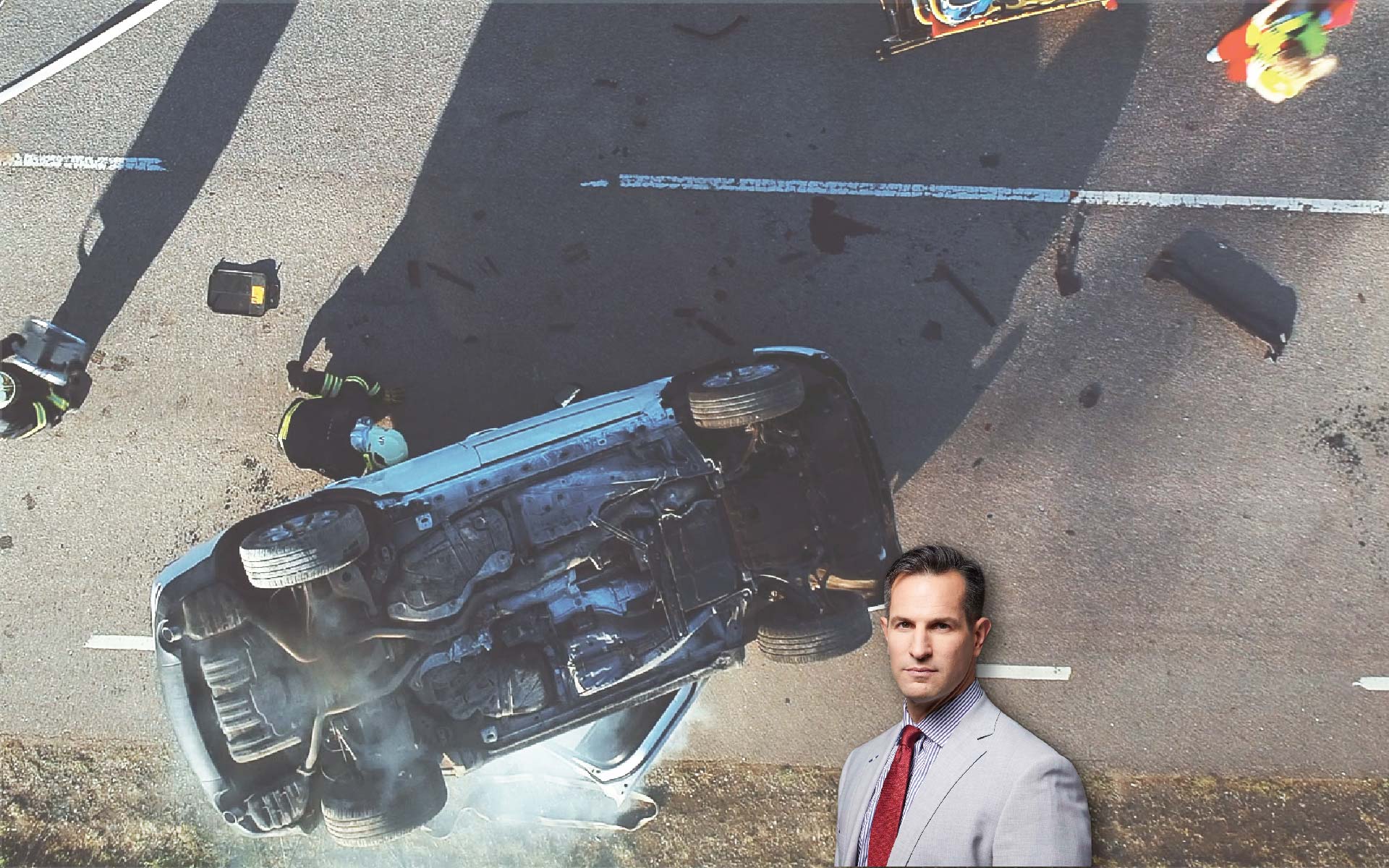A picture is worth a thousand words, especially when it comes to personal injury liability cases involving slips, trips, and falls. These accidents can occur anywhere, including grocery and retail stores, office and bank building lobbies, restaurants, theaters, schools and daycares, auto repair shops, hospitals and medical offices, on playgrounds, or inside vacation rental properties. They frequently happen at a person’s place of employment or on parking lots and sidewalks as well.
More than 1 million Americans receive emergency care each year as a result of slip and fall accidents, which are completely preventable. However, personal injury cases involving slips, trips, and falls can be difficult to prove since they rely on the premise that someone else’s negligence caused the victim’s injuries.
Crucial Evidence in Slip and Fall Cases
Documenting the scene of a slip and fall accident through photographs can help you and your attorney prove your case to the insurance company or in court. By providing a clear picture of the accident site and documenting your injuries, you’ve helped your attorney build a case for compensation before anyone sits down at the negotiating table.
Omaha personal injury attorneys at Berry Law can assess the value of your claim and suggest the appropriate figure that will compensate you for the injuries you sustained in a slip, trip and fall accident.
How is Liability Determined in a Slip and Fall Case?
Employers and property owners have an obligation under the law to maintain safety standards that protect their employees, customers and guests from accidents. They are charged with routinely monitoring their property and practicing preventative measures before an accident occurs. Even so, an estimated 2,000 slip, trip, and fall accidents are reported daily in the United States, with 700 deaths resulting each year.
Premises liability refers to a property owner’s failure to maintain safety standards that could have prevented injuries to a customer, guest, employee or patient. That individual may be found negligent and declared financially responsible for any injuries caused due to his or her negligence.
For example, Failure to Warn accidents occur when a property owner or employees fail to notify the public that a floor has recently been wet due to a spill or cleaning. If no sign is posted and an individual is injured as a result, the property owner is often found to be negligent because they failed to protect the public.
In personal injury suits, the following conditions must be present for a case to exist:
- A property owner had a duty of care toward any invited guest or customer.
- The property owner breached their duty of care in some way by failing to protect the guest or customer.
- The breach of care directly caused the victim’s injuries.
- The injuries resulted in damages for the plaintiff.
All property owners should carry personal liability insurance as part of their insurance package for this reason.
What are The Most Common Causes of Slip and Fall Accidents?
Slick or uneven walking surfaces made hazardous by spilled liquid or food, loose mats, rugs, or flooring, crumbling parking lots and sidewalks, and recently mopped or waxed floors are among the top issues that lead to slip and fall accidents. Floor mats that don’t lay flush on the floor without bunching up contribute to tripping, while accumulations of grease or cleaning products may also cause walking surfaces to become slick.
Wet floor accidents are some of the most common reasons for slipping, with spills and leaks the likely culprits. Employees and property owners are responsible for reporting and cleaning up spills and leaks as soon as they are noticed. Claiming that they didn’t know that a spill occurred is not a defense and doesn’t absolve businesses or individuals from responsibility should there be an accident.
Clutter in hallways, stairways, and lobbies can contribute to these types of accidents if objects impede walkways, retail storerooms, and other areas that require access. Empty boxes, trash and other debris, along with poorly arranged furniture and low lying drawers or cabinet doors that haven’t been closed can all create tripping hazards. Loose or unsecured cords or cables can catch on feet as people walk past. To avoid falls, loose cords should be taped or otherwise secured.
Weather-related hazards like ice, snow or rain can cause slick walking surfaces to develop very quickly. Property owners have an obligation to remove weather accumulation from sidewalks, steps, and parking lots before allowing the public to walk on them again.
As a result of guests or employees carrying oversized loads that prevent them from properly seeing potential hazards in front of them, obstructed views can pose a serious tripping hazard. Poor lighting can also contribute to visibility problems.
A lack of safety railings on stairs and ramps or loose and broken handrails or floorboards are also major contributors to slip, trip and fall accidents. Fall accidents involving stairways and stairwells can lead to serious injuries, including cuts, bruises, scrapes, fractures, paralysis and even death. Loose or damaged handrails or bannisters can provide the public a false sense of security and actually increase the risk of falls and the severity of injuries should they buckle under a person’s body weight.
Berry Law’s Team Provides You With Multiple Attorney Perspectives
Who is Most at Risk of Slipping and Falling?
These incidents are most common in people over age 55, with nursing homes and retirement communities reporting some of the highest incident rates. Improper training of employees who are charged with moving unsteady or non-ambulatory patients is a contributing factor as well, along with a lack of bed alarms that alert staff when at-risk patients attempt to get up unattended.
Unfortunately, only about two percent of slip and fall personal injury cases ever make it to jury trial because a victim may feel that they are somehow to blame for their own injuries. Property owners and insurance companies may even attempt to convince a victim that his or her injuries were due to their own clumsiness or lack of care.
What Challenges do Slip and Fall Victims Face when Seeking Compensation?
It’s financially beneficial for insurance companies to avoid paying out claims. A liability insurer may challenge the validity or amount of a slip and fall personal injury case. Likewise, a business or property owner will often try to deny that they have any liability at all, blaming the victim to avoid financial responsibility. It’s not uncommon for an insurance company to argue that the steps taken by the property owner to prevent injuries were reasonable, making it extremely difficult to receive full compensation.
Further complicating these cases, business and property owners will likely immediately clean up a spill, or remove and repair hazards following an accident, eliminating evidence that they were negligent. A lack of evidence can make it challenging to prove negligence in slip, trip, and fall accidents.
How Can Photographs Help My Slip and Fall Case?
If you’ve been involved in a slip, trip and fall accident, it’s important to document the scene of the accident, if you are able to do so, using photos or video. This helps to establish liability for the injuries you sustained. If you are physically unable to take photos, ask a family member or other witness to do so for you.
Include both close up shots and some from further away, capturing any lack of safety precautions or hazards present on camera. Record damage to the floor or the presence of blood that is due to your impact during the fall. Try to take photos from several different angles because liquid can be especially difficult to photograph due to glares and reflections.
What is Considered Crucial Evidence in Slip and Fall Cases?
Having photographic evidence of the following will document negligent behavior for the insurance company or court and serve as invaluable evidence in the event that a personal injury law suit becomes necessary:
- Missing or broken handrails on stairs or ramps
- Failure to post caution or warning signs near slippery surfaces
- The absence of runner carpets on hard surfaces when it rains or snows to prevent liquid from pooling
- Improper maintenance of flooring that is peeling, missing, broken or uneven
- Leaky ceilings, appliances or fixtures
- Spills of liquids, foods, body fluids or other hazards
- Parking lots, walkways, sidewalk, steps and porches that are snow and ice packed
- Crumbling or uneven pavement
- A lack of proper lighting
In addition to having photographs of the accident scene itself, be sure to photograph the extent and gravity of any injuries received in the slip and fall. This could include cuts, bruises, scrapes, and fractures. Even with such evidence, a defendant’s attorney may question the legitimacy of the photos to discredit the claims against his or her client.
To eliminate any doubt, begin by taking a photo of your entire body to prove that the pictures you’ve taken and submitted to the court depict injuries that you sustained, and not someone else’s. Also include close up photos of injuries directly after they occur, including surgical sites and stitches, as well as casts.
Any compensation you receive may include pain and suffering endured as a result of the accident, so it’s important to illustrate the full extent of your injuries for a jury to see. Since outward physical injuries heal over time, they may look very different from the time that the accident happened to the settlement negotiation or court date. Documenting the entire healing process can help a jury understand how your injuries progressed and appeared over time.
Also be sure to photograph the clothing and shoes you were wearing at the time of the accident, especially if they were wet or soiled, which can provide proof that a plaintiff fell in a liquid or other substance. Especially make note of any rips, tears or bloodstains present.
Tips for Obtaining Crucial Photographic Evidence in Slip and Fall Cases
While your photos don’t have to be of professional quality, they will need to be clear enough for a court to accept them as reliable evidence. Some helpful hints for taking photos include:
- Use a flash in low lighting settings and avoid glares or reflections that obscure important details.
- Take clear images. Blurry photos risk being thrown out once they reach court.
- Eliminate as much clutter as possible from your photos before taking them, unless the clutter contributed to your fall. Clutter can detract attention away from what you’re trying to document.
- Avoid using filters because they can alter an image, giving a defense attorney reason to question their reliability in court.
- Back your evidence up by making copies to provide to the court and storing any electronic files to prevent lost evidence.
Providing clear, reliable documentation of a slip, trip and fall accident scene, any resulting injuries, and the victim’s clothing and shoes gives you and your attorney a leg up when preparing a personal injury claim. The experienced team at Berry Law will examine the photographs you provide and formulate a strategy to fight for the full compensation you deserve. Reach out today for dedicated assistance.



